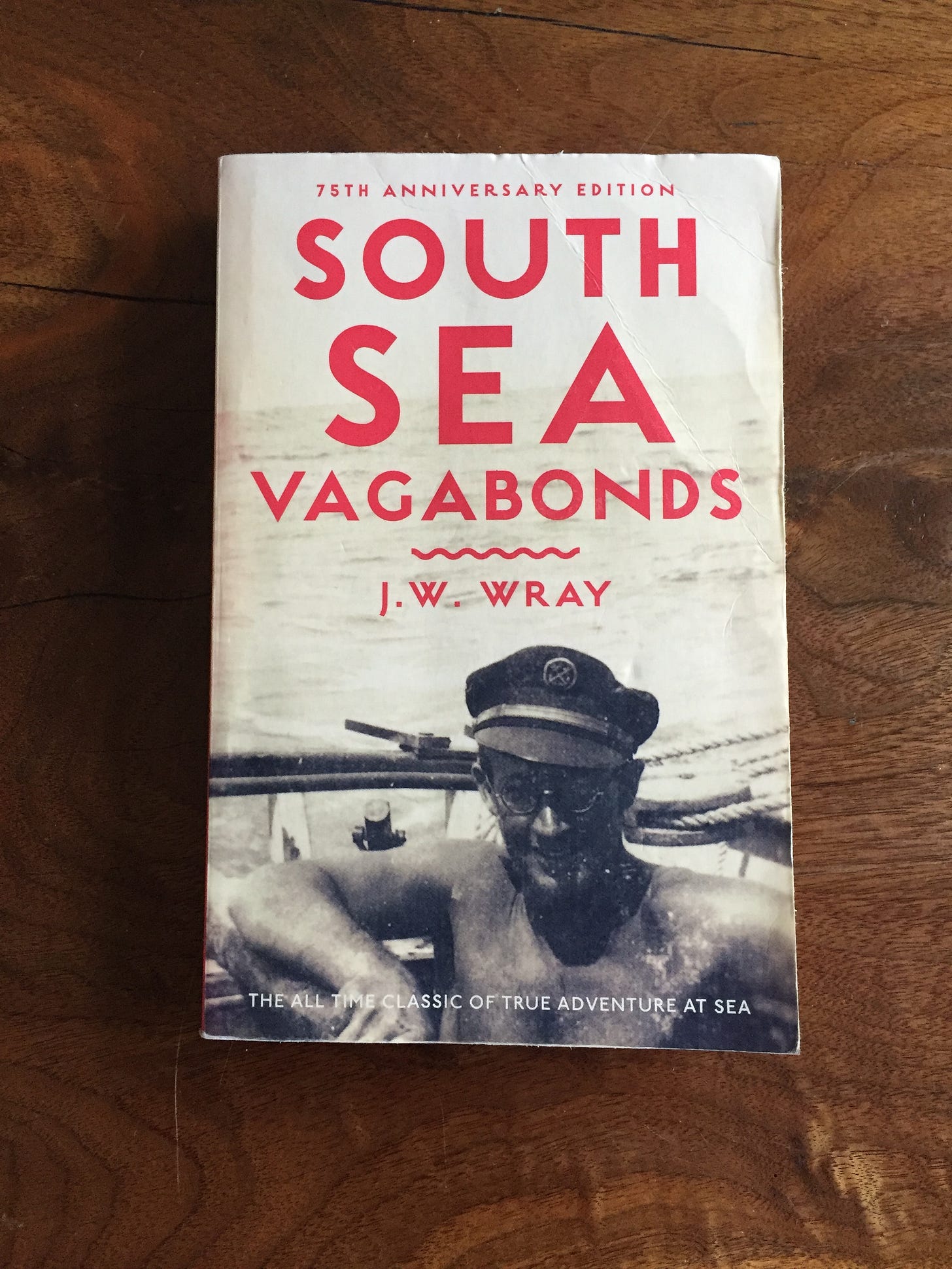The idea behind Roam Chronicles was to write more. And part of writing, a big part, is reading. So I wanted to write a bit about what I’m reading, if you follow. And I thought a good place to start this part of the exercise was with my favorite book, which I just finished reading again.
I’ve also been known to offer unsolicited book recommendations to friends and family, often dropping off a copy and wondering why they don’t get into it immediately. In fact, yesterday, I recommended this book to a friend. We’ll see how that works out.
South Sea Vagabonds, by J.W Wray
South Sea Vagabonds was written by J.W. (Johnny) Wray and first published in 1939. The timing of the book is important as it is shaped, as all books at this time are, by the Great Depression. The prevailing message you get from these books is making do - making do with what you have and being creative in obtaining, or in this case building, what you don’t. But dreams and ideas are never stopped by lack of resources, only initiative. And this is where Wray’s example can inspire any dreamer, sailor or not.
The first third of the book is dedicated not to the adventure of sailing the south seas, weathering storms, landing at idyllic islands, and meeting locals (although there is plenty of that later) but of the adventure and necessity of building his boat. The Ngataki (pronounced Nar-ta-ki) is designed, sourced, and built almost single-handedly by Wray in his family’s front yard. And this is no dinghy, but a 35-foot ocean cruiser that would go on to safely cover thousands of ocean miles, weathering the unavoidable gales and hurricanes that come with it. This is the part of the story that sets this book apart from most, where obtaining a boat is usually done with a single transaction of money.
Wray had no money. His life savings when he began accounted to a war chest of 8 pounds, 10 shillings (worth just over 700 pounds today). But being fired from his accounting job in the middle of the depression (not due to economics, mind you, but his, shall we say, attitude?) meant he had that other valuable resource, time.
Over the course of the next couple of years, he visited boat builders and copied their methods, scoured outer islands for coveted kauri logs, exchanged logs for timber at the local mill, and generally built everything he needed according to “first principles.”
New Zealand author Bruce Ansley noted in his 2014 introduction to the book:
“Building a boat in the backyard was not uncommon then. In Devonport especially, several were being built at any one time.” Harold Kidd, a local writer and historian, remembered, “I went to Devonport school and Takapuna Grammar, and all around me boats were being built … but building an ocean cruiser from driftwood and fencing wire for virtually nothing was unusual.”
“It was April the 16th, 1932, when this first load of timber arrived at my home.” And this is when building began in earnest. By Christmas of 1933, Ngataki was in the water. And this was when the cruising began, also in earnest.
“It is obviously useless to try to deceive you - utterly useless to trump up some story that during the few months which followed I did anything in the nature of work. I may as well admit straight off that I did - well, call it nothing. Nothing, that is, except sail my boat, cruise in my boat, eat, sleep, and drink in my boat.”
And Wray would be able to look around him not as an observer of nature or the sights but of the source of his freedom. “There you are, Beach, just look what I’ve built out of those old logs, that you’ve been hiding all these years beneath your old, grey stones.”
In Wray’s home country of New Zealand, the book became a legend and an inspiration for generations of sailors to drop their dull office jobs and suffocating city routines for life on the seas.
Fittingly, it was here among the boatbuilders, sailors, and dreamers at the inviting Paradox Books bookstore on Victoria Road in Devonport that I found South Sea Vagabonds - its cover facing forward for browsers to see, daring wannabe vagabonds like me to take a look. Devonport, a village on this narrow spit of land jutting out into Auckland Harbor, its ferries shuttling people past hundreds of sailboats on their commutes to Auckland each day, practically begs you to build a boat and set sail. As for my local bookstore, a quick search on their website doesn’t even produce a result for South Sea Vagabonds, so I consider discovery quite a gift.
And as far as measuring up against the great adventure writers, the award winners, and serial book authors, as Wray himself states in the preface, “this book is written primarily for dreamers, and they don’t mind if a man can write or not as long as the facts are there.”
And continues,
“I was a dreamer once, but now my dreams have come true, and I am satisfied and happy.”
Buy South Sea Vagabonds on Amazon [affiliate link]




